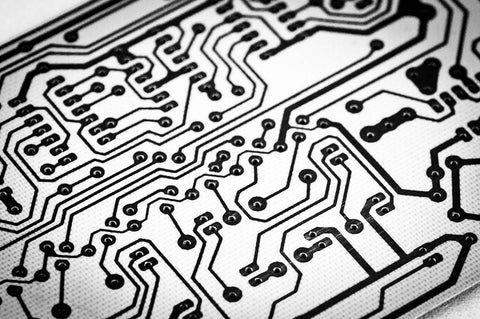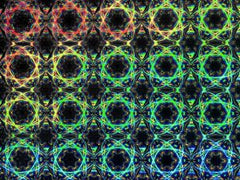more »
Graphene - gamechanger, or just hype?
Not so long ago, some started to think that graphene will never live up to its promise as a radical technology changer, because it seemed that it's been such a long time since it was discovered and hyped up, and no real graphene electronic devices have been shown.
The hype was becoming apparent already in 2010, following the Nobel prize awarded for the discovery of the material, and Professor Geim had to come out with statements of caution in the media on several occasions. Even as the Graphene Flagship (which Graphenea is part of) was awarded a billion euros,
Professor Andrea Ferrari of Cambridge University stressed the amount of work that still needs to be done before graphene goes commercial. Even so, the hype kept rising.
Gapless graphene
A part of the reason for the apparent dissonance in the expectations of the public and those of the experts was the lack of a band gap in graphene. A band gap is a range of energies which charge-carrying electrons in a material cannot occupy, leading to a pronounced difference in the behaviour of electrons below the gap to those above the gap. Namely, electrons below the energy band gap are fixed to their positions and do not carry any current. Those above the gap have enough energy to move around, making the entire material conductive. Materials that possess a band gap are called semiconductors, the most famous of the class being the ubiquitous silicon.
The absence of a band gap in graphene makes all its electrons mobile. While zooming mobile electrons are great for carrying electricity and showing off a range of spectacular scientific breakthroughs, the inability to switch the current off stands in stark contrast to the requirements of the traditional transistor, the basic element of electronic circuit logic. All internal circuits in consumer electronic devices operate on the principle of bits, on the exchange of "0"s and "1"s the sequence of which encodes the relevant information. Modern circuits incorporate billions of semiconductor transistors, constantly flipping between the conducting and insulating state. Graphene just isn't able to do that. Or is it?
Graphene transistors are real
Already back in February, reports showed up of a
new class of graphene transistors. How was it done? By bombarding a part of a graphene sheet with helium ions, that part of the sheet is strongly modified by introducing defects. The ion-irradiated part acquires a much larger density of charge carriers than the rest of the sheet, creating an insulating region. The insulating region prevents current flow between the electrodes of the device. Now defaulting to the "0" state, the graphene transistor can be made to conduct current again by applying an electric field to the pristine parts of the graphene. The field is applied with an additional pair of electronic gates.
The result was an interesting proof of principle, and was not the first nor the last that appeared around the same time. All the effort, however, was plagued by the resultant low quality of the graphene switch. The graphene that was exposed to ions or other types of chemicals would always have a dramatically reduced ability to conduct electrons, compared to the untreated case. Also, the switching efficiency was always poor compared to what we're used to from silicon. So the partial success of the first graphene transistors was more food for the sceptics.
 Figure:
Figure: Printed circuits are about to become fast and flexible. Source:
sxc.hu.
Just some months later, we are seeing a rise of advanced graphene electronic devices. Less than two weeks ago,
researchers at MIT demonstrated a novel way of increasing the charge carrier concentration in graphene. Chlorine gas was introduced to a graphene surface in a controlled way, so to not damage the sheet in the process. Teams led by Mildred Dresselhaus and our scientific adviser Tomas Palacios, modified the graphene surface with chlorine plasma in a reactive ion etcher, a plasma-inducing chamber with tightly controlled conditions. After careful tweaking of the process, they were able to retain the high charge carrier mobility of 1500 cm2/V, commonly obtained in untreated graphene. The process uniformly coats graphene with the chlorine, with coverage up to 45% of the surface area. Theory predicts that at 50% coverage, the all-important band gap will emerge in graphene. Just 5% more, and we could have graphene transistors comparable to those made of silicon - except they would be
ultrathin, transparent, printable, and flexible.
A new kind of graphene logic
Nearly simultaneously, researchers at the University of California, Riverside, have come up with a new approach to graphene transistors.
Instead of modifying the graphene, Alexander Balandin and colleagues have chosen to modify the logic. The team uses regular band gap-less graphene, and utilizes the material's unique property of negative differential resistance. With negative resistance, under some conditions, the electrical current increases with decreasing the applied voltage. Biasing parts of the graphene sheet into the "negative" regime and other part normally, a new type of transistor was achieved. This time scientists did not stop at showing the proof of principle, but rather went all the way to showing a logic gate made from graphene. At operating speeds predicted to be up to 400 GHz, the approach could usher in a new era of graphene information processing.
Graphene has its share of hype and overselling, however it is important to note that research is still proceeding at an incredible pace, with the scientific landscape radically changing every few months. Although much remains to be done to fulfil all the promise that this wonderful material holds, the research and industry communities are working diligently towards a common goal - new graphene-enabled technologies.
via Graphenea

 Speakers included lead researchers of industry giants, such as HEAD, BASF, Airbus and Volvo. HEAD proudly showed the first commercial graphene product - their now famous
Speakers included lead researchers of industry giants, such as HEAD, BASF, Airbus and Volvo. HEAD proudly showed the first commercial graphene product - their now famous  As electrons zip through circuits, they lose some of their energy to heat. As the circuits get smaller, the heat density increases. The heat problem has become so big that a recent study showed that 50% of the electricity consumed by big data servers goes on cooling the servers. Now researchers at Chalmers University of Technology, that leads the billion-euro Graphene Flagship,
As electrons zip through circuits, they lose some of their energy to heat. As the circuits get smaller, the heat density increases. The heat problem has become so big that a recent study showed that 50% of the electricity consumed by big data servers goes on cooling the servers. Now researchers at Chalmers University of Technology, that leads the billion-euro Graphene Flagship, 